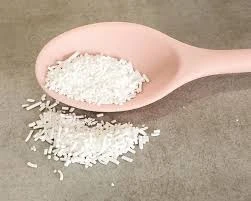
sulfur dioxide as a preservative
The Role of Sulfur Dioxide as a Preservative
Sulfur dioxide (SO2) is a colorless gas with a distinctive pungent smell, widely recognized for its role in the preservation and enhancement of various food products. While it serves multiple industrial purposes, its application in food preservation dates back centuries. The use of sulfur dioxide as a preservative is particularly prominent in the wine industry, but it also finds its way into a plethora of dried fruits, juices, and certain pickled products.
One of the primary reasons for the widespread use of sulfur dioxide in food preservation is its remarkable ability to inhibit the growth of spoilage organisms, including bacteria and fungi. This antimicrobial property is essential for extending the shelf life of perishables, ensuring that products remain safe and palatable for consumers. Additionally, sulfur dioxide acts as an antioxidant, preventing oxidative reactions that can lead to rancidity and discoloration, thereby maintaining the quality and appearance of food over time.
In the world of wine, sulfur dioxide is a critical component in the winemaking process. It is utilized from the moment grapes are crushed until the wine is bottled, helping to retain the wine's natural flavors and aromas while preventing spoilage. The presence of SO2 helps to stabilize the wine, allowing for a longer aging process without compromising taste. In white wines, particularly, the use of sulfur dioxide is favored to maintain the bright, fresh characteristics that many consumers appreciate.
sulfur dioxide as a preservative

Beyond its effectiveness, the use of sulfur dioxide is also subject to regulatory considerations. Food safety authorities, such as the U.S. Food and Drug Administration (FDA) and the European Food Safety Authority (EFSA), set limits on the amount of sulfur dioxide that can be used in food products to mitigate potential health risks. While generally recognized as safe when used in moderation, some individuals may experience sensitivities or allergic reactions to SO2, particularly those with asthma. Consequently, food labels often indicate the presence of sulfur dioxide, allowing consumers to make informed choices regarding their dietary intake.
Despite its advantages, the conversation surrounding the use of sulfur dioxide as a preservative is evolving. With increasing consumer awareness regarding additives in food, there is a growing demand for natural and organic preservation methods. As a result, the food industry is exploring alternatives such as natural antioxidants, essential oils, and fermentation processes that can effectively preserve food without synthetic additives.
In conclusion, sulfur dioxide remains a valuable tool in the arsenal of food preservation techniques. Its effectiveness in inhibiting spoilage and maintaining the quality of products, particularly in the wine and dried fruit industries, underscores its importance. However, as consumer preferences shift towards more natural choices, the future of sulfur dioxide in food preservation may face new challenges, prompting industry stakeholders to innovate and adapt to this changing landscape.
-
Pure Sodium Dichloroisocyanurate Dihydrate | Powerful DisinfectantNewsAug.29,2025
-
Industrial Chemicals: Quality & Purity for Every IndustryNewsAug.28,2025
-
Nitrile Rubber Honoring Strict Production StandardsNewsAug.22,2025
-
Aspartame Ingredients Honoring Food Safety ValuesNewsAug.22,2025
-
Fertilizer for Balanced Plant NutritionNewsAug.22,2025
-
Cyanide Gold Processing with High Purity AdditivesNewsAug.22,2025
-
Formic Acid in Textile Dyeing ApplicationsNewsAug.22,2025
Hebei Tenger Chemical Technology Co., Ltd. focuses on the chemical industry and is committed to the export service of chemical raw materials.
-

view more DiethanolisopropanolamineIn the ever-growing field of chemical solutions, diethanolisopropanolamine (DEIPA) stands out as a versatile and important compound. Due to its unique chemical structure and properties, DEIPA is of interest to various industries including construction, personal care, and agriculture. -

view more TriisopropanolamineTriisopropanolamine (TIPA) alkanol amine substance, is a kind of alcohol amine compound with amino and alcohol hydroxyl, and because of its molecules contains both amino and hydroxyl. -

view more Tetramethyl Thiuram DisulfideTetramethyl thiuram disulfide, also known as TMTD, is a white to light-yellow powder with a distinct sulfur-like odor. It is soluble in organic solvents such as benzene, acetone, and ethyl acetate, making it highly versatile for use in different formulations. TMTD is known for its excellent vulcanization acceleration properties, which makes it a key ingredient in the production of rubber products. Additionally, it acts as an effective fungicide and bactericide, making it valuable in agricultural applications. Its high purity and stability ensure consistent performance, making it a preferred choice for manufacturers across various industries.





